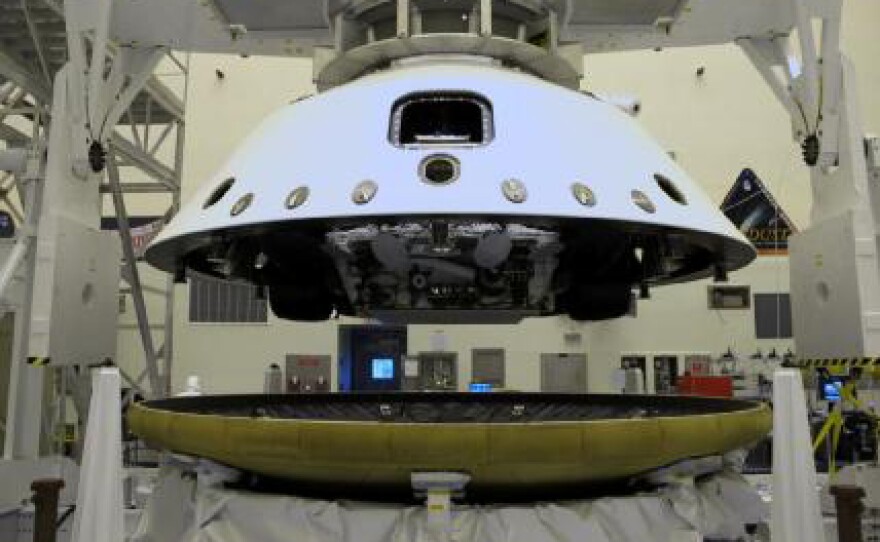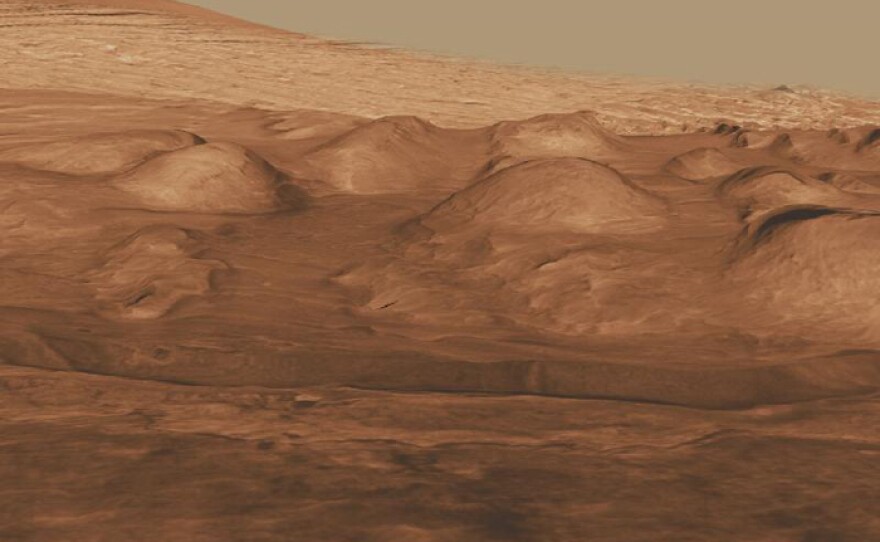Why go back to Mars? Far from dead, Mars now holds untold potential. Nearly half a century of Mars exploration has yielded tantalizing clues that Mars may once have harbored life – and may harbor it still. But when a revolutionary rover named Curiosity touches down inside the Gale Crater in August 5, 2012, it could be NASA’s last chance to set wheels down on Mars until the end of the decade.


“Sending Curiosity to Mars is a tremendous technological and engineering feat that could help us answer some of the most basic questions humankind has about the origins of life and our place within the universe,” said Paula S. Apsell, Senior Executive Producer of NOVA. “Our NOVA viewers will want to be there every step of the way for this epic and painstaking journey and the discoveries that may come from it.”


Profile: Vandi Verma
A daredevil engineer born in India now drives NASA's Mars rovers.
A Life-Changing Landing on Mars
Planetary scientist Ashwin Vasavada reflects on life as a member of the Mars Science Laboratory team.
Quick Facts
A marvel of technology, it is the most sophisticated robot ever to rove the surface of Mars. But the stakes are high and the risks are extraordinary. Half of all missions to Mars end in failure. Will this be one of them? If it succeeds, will it answer some of our biggest questions and usher in a new golden age of exploration?
NOVA goes behind the scenes on NASA’s quest to solve the riddles of the red planet in “Ultimate Mars Challenge,” which premiered in November 2012.
The Mars Science Laboratory (MSL) is the most complex and scientifically powerful robotic expedition ever sent to another world. Scientists say that Curiosity is as close as we can get to sending a field geologist to Mars.
Decoding the history of the red planet could unlock secrets about our own planet. The daring operation could bring us one step closer to solving the fundamental mysteries driving planetary science:
How did life arise on Earth? Is life on Earth a unique accident or did life arise elsewhere in our solar system — and beyond? If we do find life off Earth, will it resemble us — or be utterly different in its bio- chemistry?
Curiosity follows in the footsteps of previous Mars missions. It will join the Mars Exploration Rover Opportunity — still roving the surface of the red planet eight years after its arrival. Curiosity will be tracked by three Mars orbiters that will relay the rover’s travels and discoveries to the mission team on Earth.
And getting Curiosity safely to the surface requires a landing system never before attempted on Mars with a zero margin for error. After rocketing across 350 million miles of space, Curiosity will hit Mars atmosphere at about 13,000 miles per hour.
The largest parachute ever used on a space mission will slow the rover’s descent — until a “sky crane” takes over and lowers Curiosity to the planet’s surface. This daring new system requires a dangerous dance of technology and perfect timing. “A million things need to go exactly right,” says one of its designers. Will it work on Mars?
Weighing in at nearly a ton, this nuclear-powered “rover on steroids” carries twice the scientific payload as its two predecessors, Spirit and Opportunity. This model is fully loaded with high definition (HD) cameras, a rock-zapping laser spectrometer and a Radiation Assessment Detector that will provide the first-ever measurements of surface radiation on Mars.
The rover also carries two extraordinary miniaturized laboratories that can analyze samples of rocks and soil for signs that Mars might once have been suitable for life. Expectations and tensions run high. Planning this daring operation and pulling it off require nearly a decade of effort by a cast of thousands of scientists and engineers. Careers and billions of dollars are on the line.
NOVA obtains footage and interviews with the massive team of scientists and engineers responsible for Curiosity’s inception and with those running the on-the-ground experiments to prepare the rover for dealing with harsh Martian conditions and equipment emergencies.
Camera crews go behind the scenes with the team at NASA’s Mars Science Laboratory (MSL) — interviewing those who have spent years directing the Curiosity project, including MSL Project Chief Engineer Rob Manning, MSL Deputy Scientist Ashwin Vasavada, MSL Mission Manager Michael Watkins and MSL Chief Scientist John Grotzinger.
What remains to be seen is whether the monumental undertaking pays off and NASA’s MSL bold mission proves to be a trailblazing scientific strategy that forges new frontiers.
“Ultimate Mars Challenge” will take NOVA viewers on the full journey in an in-depth film that chronicles the operations from the planning stages and Curiosity’s engineering, construction, testing and move to the Kennedy Space Center — through the exhilarating moments of Curiosity’s launch and landing — and the spectacular discoveries to come.
Past episodes of NOVA are available for online viewing. NOVA is on Facebook, and you can follow @novapbs on Twitter.
Watch Ultimate Mars Challenge - Preview on PBS. See more from NOVA.





